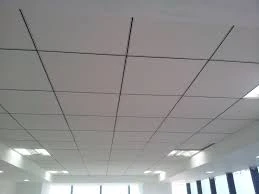- Afrikaans
- Albanian
- Amharic
- Arabic
- Armenian
- Azerbaijani
- Basque
- Belarusian
- Bengali
- Bosnian
- Bulgarian
- Catalan
- Cebuano
- Corsican
- Croatian
- Czech
- Danish
- Dutch
- English
- Esperanto
- Estonian
- French
- German
- Greek
- Hindi
- Indonesian
- irish
- Italian
- Japanese
- Korean
- Lao
- Malay
- Myanmar
- Norwegian
- Norwegian
- Polish
- Portuguese
- Romanian
- Russian
- Serbian
- Spanish
- Swedish
- Thai
- Turkish
- Ukrainian
- Uzbek
- Vietnamese
Kas . 10, 2024 01:57 Back to list
Accessing Your Plasterboard Ceiling Hatch for Easy Maintenance and Inspections
Understanding Plasterboard Ceiling Hatches A Comprehensive Guide
Plasterboard ceiling hatches are often overlooked features in architectural design, yet they serve a crucial function in modern homes and commercial spaces. These unobtrusive access points provide entry to often concealed systems, such as ductwork, plumbing, electrical wiring, and insulation. In this article, we will explore the importance, installation, benefits, and maintenance of plasterboard ceiling hatches.
Importance of Plasterboard Ceiling Hatches
In many buildings, particularly those that rely on suspended ceilings and plasterboard construction, access to hidden infrastructures is essential. For maintenance and inspection, these hatches allow service personnel to reach areas that would otherwise be difficult to access, thereby ensuring systems remain functional and efficient. Without ceiling hatches, maintenance personnel would have to resort to more invasive (and often more costly) methods to access these systems, leading to potential damage and unnecessary expenditure.
Installation of Ceiling Hatches
Installing a plasterboard ceiling hatch requires some basic tools and careful measurement to ensure a proper fit. Generally, the process begins by selecting an appropriate location for the hatch. Consideration should be given to the accessibility for maintenance while also ensuring that its placement does not interfere with the aesthetic appeal of the space.
Once the location is determined, the next steps involve cutting an opening in the plasterboard ceiling. It is advisable to use a stud finder to locate beams or joists so that the opening is placed between them. After cutting the opening, the hatch frame can be installed by securing it into place with screws and drywall adhesive. The final step involves attaching the hatch door, which can include features like a latch or hinge system for secure closure.
Benefits of Using Plasterboard Ceiling Hatches
plasterboard ceiling hatch

1. Convenience One of the primary benefits of plasterboard ceiling hatches is the easy access they provide. Frequent inspections and maintenance of essential systems become straightforward, saving time and reducing maintenance costs.
2. Aesthetics Ceiling hatches can be designed to blend seamlessly with the ceiling. Many come with a smooth finish that can be painted to match the surrounding plasterboard, ensuring that they remain inconspicuous.
3. Safety By offering a designated entry point to roof spaces and concealed systems, hatches help to minimize the risk of damage. This also helps prevent accidents that could occur from unauthorized access or children exploring unsafe areas.
4. Energy Efficiency Regular access to insulation and duct systems is crucial for maintaining energy efficiency. By facilitating easy inspections and repairs, ceiling hatches contribute to overall energy savings in buildings.
Maintenance of Ceiling Hatches
To ensure that plasterboard ceiling hatches continue to serve their purpose effectively, regular maintenance is essential. Homeowners should inspect the hatches periodically for signs of wear, including hinges that may require lubrication or seals that may need replacing. Keeping the hatch clean and free from debris can also aid in its proper functioning.
In conclusion, plasterboard ceiling hatches are a valuable feature that provides essential access to hidden systems within a building. Their ease of integration, aesthetic appeal, and contribution to safety and energy efficiency make them an important consideration in modern architectural design. For homeowners and builders alike, understanding the significance and proper maintenance of these hatches can lead to enhanced functionality and longevity in building projects. As a simple yet effective solution, plasterboard ceiling hatches warrant greater recognition in both design and construction discussions.
-
Transform Interiors with PVC Gypsum Ceiling: A Stylish, Durable, and Moisture-Resistant SolutionNewsMay.19,2025
-
The Smart Interior Upgrade: Discover the Durability and Versatility of Gypsum Ceiling Access Panel SolutionsNewsMay.19,2025
-
The Smart Choice for Interior Design: Discover the Value of PVC Gypsum Ceiling SolutionsNewsMay.19,2025
-
Mineral Fiber Ceiling Tiles: The Smart Blend of Performance and AestheticsNewsMay.19,2025
-
Mineral Fiber Ceiling Tiles: The Superior Choice Over Gypsum for Sound and Fire SafetyNewsMay.19,2025
-
Mineral Fiber Ceiling Tiles: Eco-Friendly Strength and Style for Every CeilingNewsMay.19,2025







